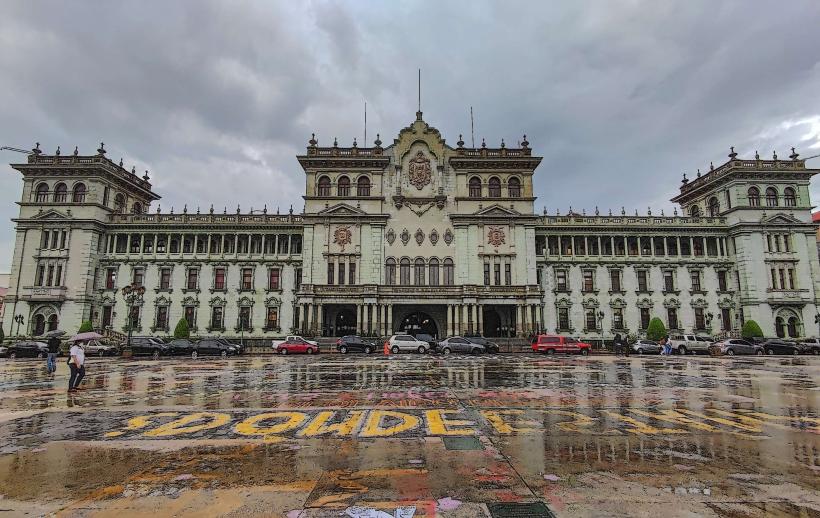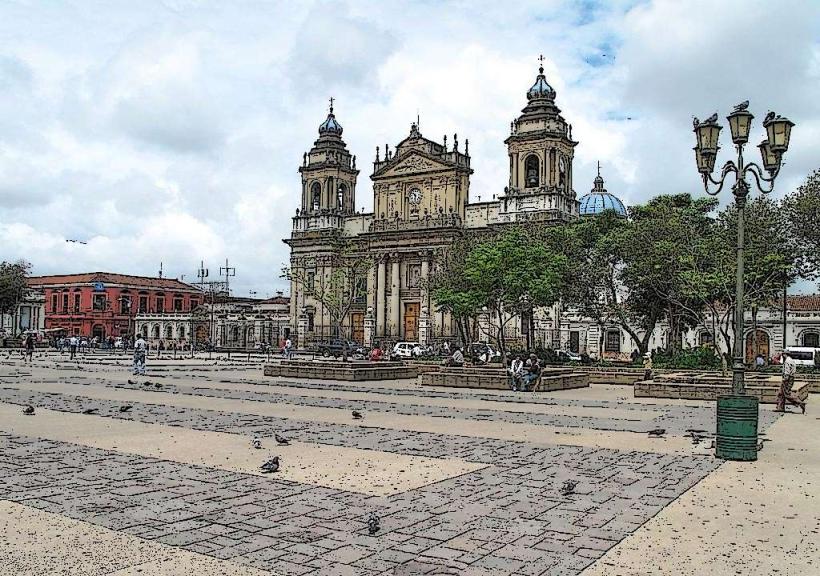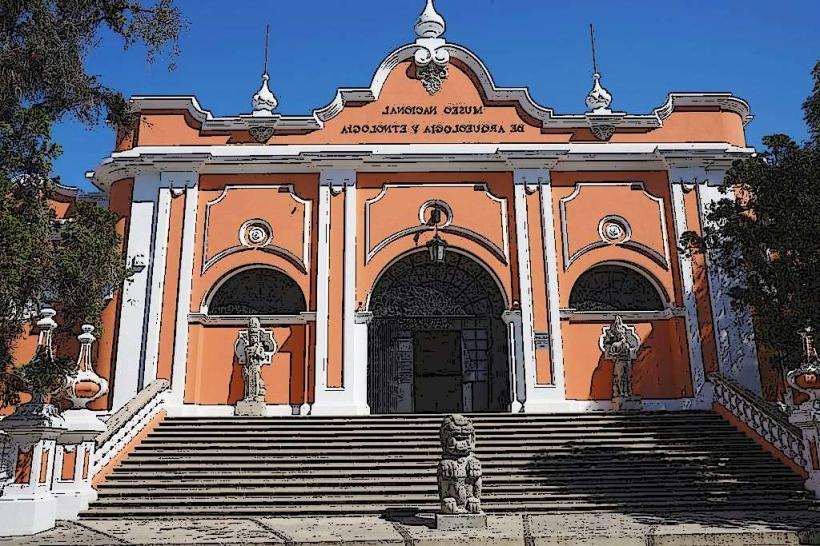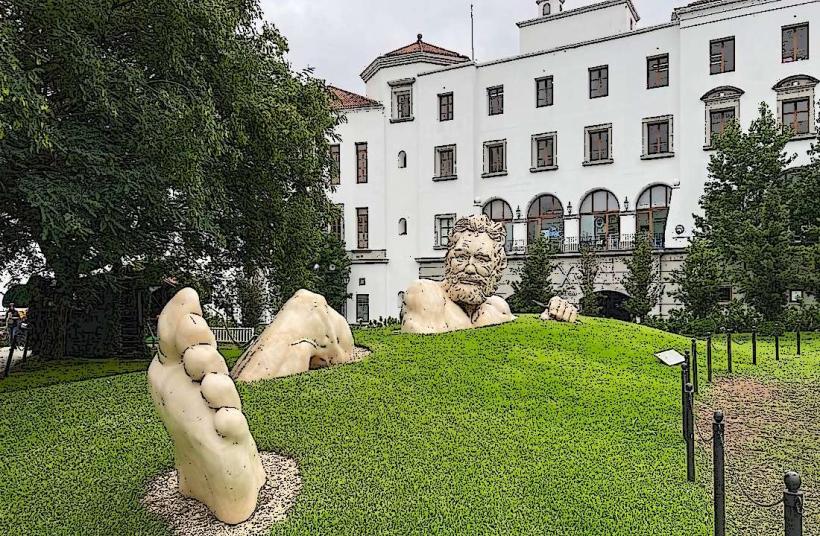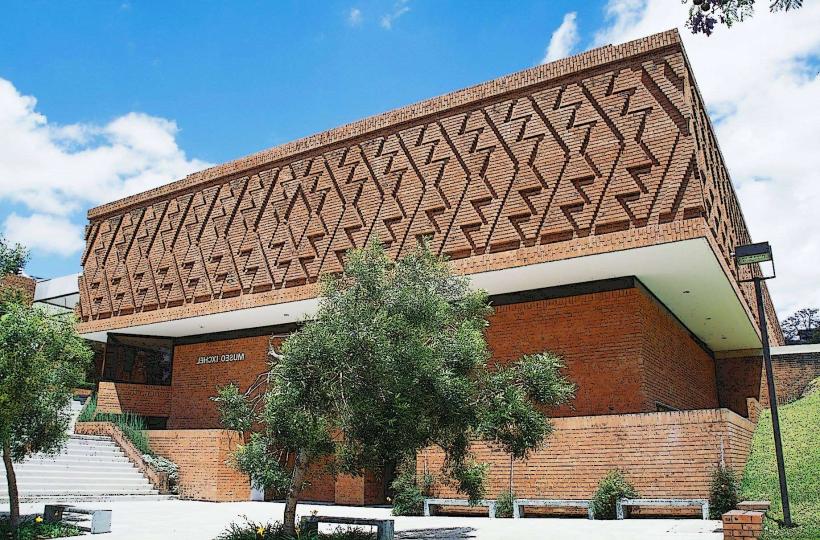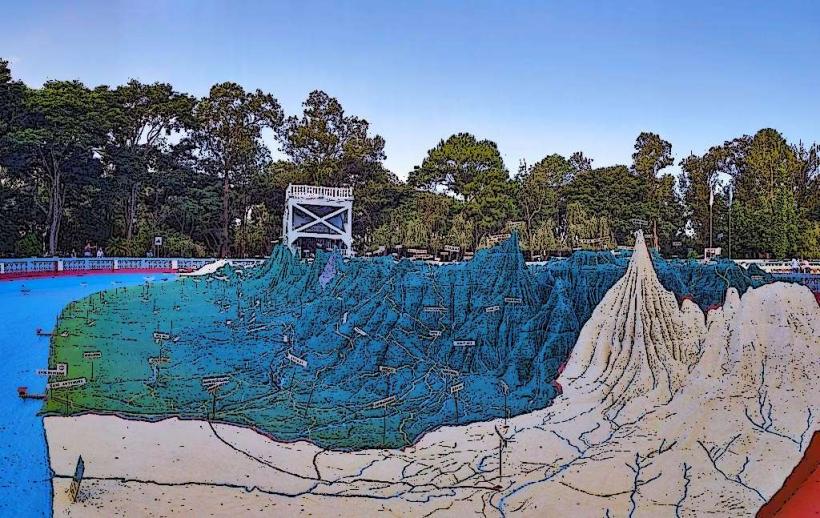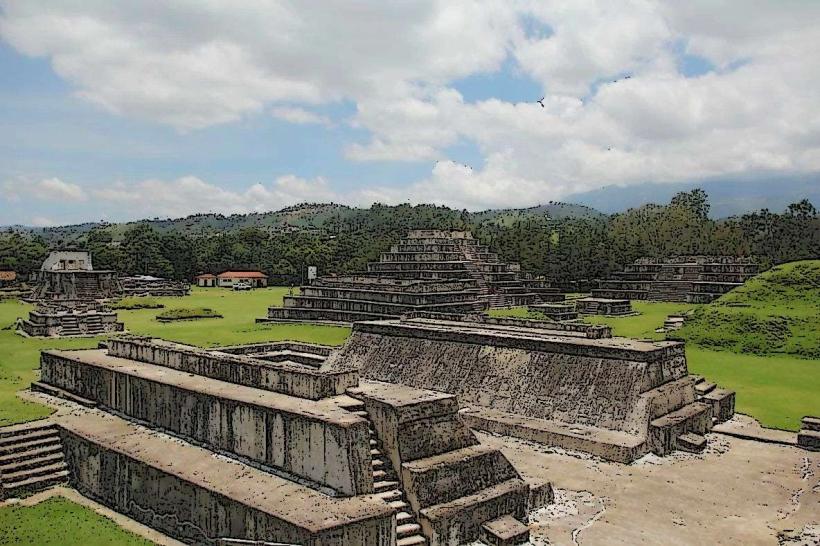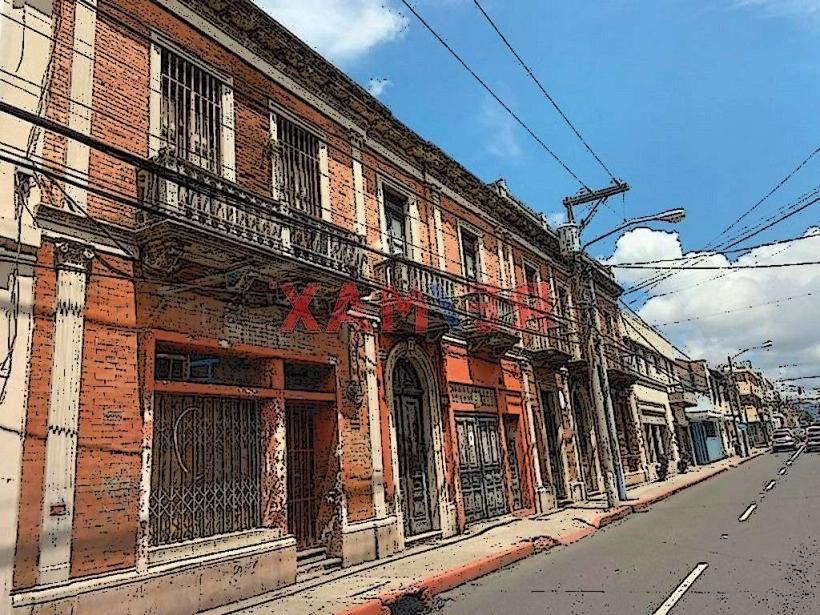Information
Landmark: Metropolitan CathedralCity: Guatemala City
Country: Guatemala
Continent: North America
The Metropolitan Cathedral of Guatemala City, officially known as Catedral Metropolitana de la Asunción de la Virgen María, is one of the most iconic structures in Guatemala and a significant example of colonial architecture in Central America. It is located in the central square, Plaza Mayor (now known as Parque Central), which places it at the heart of the city’s cultural and historical life.
History and Construction:
The construction of the cathedral began in 1782, with the architectural project initiated by the then Archbishop, Pedro Cortés y Larraz. The project was overseen by architect Diego de Porres, and it was completed in 1815, though much of the work, including final embellishments, continued into the 19th century. The cathedral was built to replace the original church, which had been destroyed by an earthquake in 1773. The building was intended not only as a religious center but also as a symbol of Spanish colonial power and the Catholic faith.
Architectural Style:
The cathedral is a fusion of Baroque and Neoclassical styles. While its construction began in the Baroque period, neoclassical elements were introduced during the late stages of the building’s completion, which reflects the changing architectural tastes of the time.
Exterior:
The exterior of the Metropolitan Cathedral features a striking baroque facade with a large central entrance flanked by two towering bell towers. The bell towers rise about 50 meters, and each tower has a distinctive profile with a rounded dome at the top. The overall layout of the building follows a Latin Cross design, typical of many churches of the period, with a wide central nave and transept intersecting at the altar.
Facade: The facade itself is richly detailed, with a combination of reliefs, niches, and sculptures. Several saints and religious figures are depicted in the carvings, and the central door is surrounded by intricate carvings of biblical scenes and saints. Above the main door, there is a large arch that houses the statue of the Virgin Mary, who is central to the cathedral's devotion.
Towers: The two bell towers, adorned with elaborate arches, columns, and statues, make the cathedral easily recognizable from across the city. The bell towers each contain a clock and a set of bells, which are still used for services and special events.
Interior:
The interior of the Metropolitan Cathedral is equally impressive, combining Baroque and Neoclassical features. It is a large space, designed to accommodate large congregations, with high vaulted ceilings that draw attention upward.
Main Altar: The main altar is the focal point of the interior. It is a magnificent baroque piece, intricately carved from wood and adorned with golden details. The altar is dedicated to the Assumption of the Virgin Mary, which is reflected in the prominent image of the Virgin at the altar. The altar’s design features ornamental motifs such as angels and biblical scenes, making it both an artistic and spiritual center of the church.
Side Chapels: The cathedral features multiple side chapels, each dedicated to different saints or religious figures. These chapels, while more modest in scale, are rich in religious artwork, including altarpieces, paintings, and sculptures. Some chapels have Baroque-style altars, while others reflect a more Neoclassical influence.
Woodwork and Paintings: The cathedral is home to exceptional woodwork, particularly in the pews and choir area, which showcases the craftsmanship of colonial artisans. The walls of the interior are adorned with paintings and frescoes depicting scenes from the Bible, the life of Christ, and the lives of saints. Many of these artworks were created by local artists in the 18th and 19th centuries.
Organ: The cathedral houses an impressive pipe organ, a gift from Spain. The organ is still used in religious services and concerts, adding to the spiritual atmosphere with its powerful sound.
Relics and Tombs:
The Metropolitan Cathedral is not just a church but also a historical site due to the presence of significant religious relics and tombs. The tomb of several notable bishops and archbishops of Guatemala is located within the cathedral. The most famous is that of Bernardo de Aldana, a former archbishop. These tombs are marked by ornate gravestones and commemorative plaques.
- The Crypt: Beneath the cathedral lies a crypt, which contains the remains of several archbishops and important religious figures from the region's history. The crypt is considered a sacred space and is a place of reflection and reverence.
Cultural and Religious Significance:
The Metropolitan Cathedral is a central point for the spiritual life of Guatemala. It serves as the seat of the Archbishop of Guatemala and is the main church for the Roman Catholic community in the capital. It is the site for major religious events, including Christmas Mass, Easter processions, and the annual feast day of the Virgin of the Assumption (August 15), the cathedral’s patron saint.
The cathedral has also played an important role in the political history of the country. It has witnessed various key moments in Guatemala's history, from colonial rule to the struggles of the 20th century. The building’s significance goes beyond religious practice; it is a symbol of resilience, having survived earthquakes, political turmoil, and changing times.
Renovations and Preservation:
Over the years, the Metropolitan Cathedral has undergone various renovations to preserve its structure and artwork. The building was affected by multiple earthquakes, including the powerful one in 1773, which led to the reconstruction efforts. Additional repairs were made throughout the 19th and 20th centuries, including stabilization work to prevent further damage from seismic activity.
Visiting the Cathedral:
The Metropolitan Cathedral remains a popular tourist destination, attracting visitors for both its religious significance and architectural beauty. It is also a place of daily worship and reflection for locals. Visitors can enter freely, though respectful behavior is encouraged, especially during religious services. The cathedral's location in the central square means it is easily accessible, and its proximity to other important landmarks, such as the National Palace and the National Museum of History, makes it an essential part of a visit to Guatemala City.

